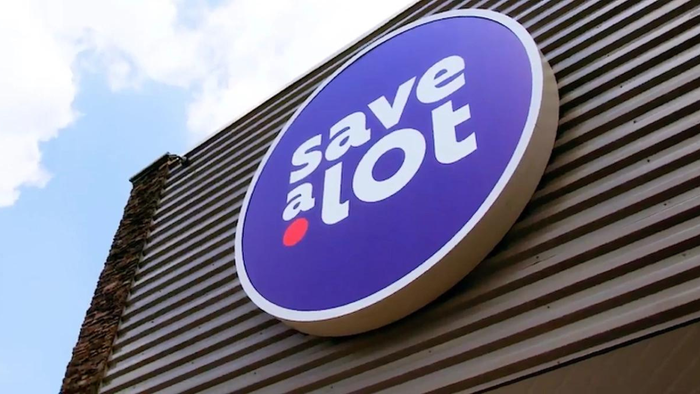Artful artichokes
January 1, 2018
Dairy sales are back on track thanks to innovative products and heightened consumer awareness. By Nora Caley They make a gorgeous display in the produce aisle, but many home cooks pass right by the artichokes unless they’re making a dip. Artichoke growers and retailers are teaming up to broaden the appeal of this vegetable by educating consumers about how to prepare artichokes, touting their nutritional benefits and demonstrating how the various sizes can be used for different eating occasions. The Newark, Del.-based Produce Marketing Association, citing USDA figures, reports that consumption of artichokes has remained steady over recent years. U.S. consumers ate 1.7 pounds of artichokes per capita in 2006, 1.6 pounds in 2007 and 2008, then 1.5 pounds in 2009. That puts artichokes’ popularity at the same level as cauliflower (1.6 pounds in 2008 and 2009) and spinach (1.6 pounds in 2008 and 2009). Kori Tuggle, marketing manager for Ocean Mist Farms, based in Castroville, Calif., says the artichoke category is strong. “Consumers are as focused as ever on healthful shopping and value. Low in calories and fat-free, artichokes are an excellent source of fiber and vitamin C and a good source of folate, magnesium and potassium.” She adds that Ocean Mist grows artichokes year round and peak season is upon us. “March through mid-May is peak season for the classic green globe variety in Castroville,” she says. “The spring crop generally starts peaking on the jumbo to large sizes in March through April. May is the peak for the foodie favorite size: the baby artichoke. Due to new growing practices, this year will be one of our largest spring crops in terms of volume.” Looking good Others are also optimistic about the artichoke category. “Overall things are looking good,” says Mishalin Modena, marketing manager for Growers Express, LLC in Salinas, Calif. “Artichokes are one of the top five commodities for us to promote in 2010.” She says it helps that the spring artichokes look more attractive than the “winter-kissed” or “frost-kissed” varieties. The cold weather version is flavorful but features an outer layer that has brown spots. “Consumers might think these don’t look right,” she says. Henry Dill, sales manager for Salinas, Calif.-based Pacific International Marketing, is also looking forward to spring. The company had a disappointing winter crop of the Desert Globe variety, but Dill expects the spring Green Globe variety to do better. “The current availability seems to be improving each day,” he says. Douglas McFarland, marketing director for Colorful Harvest based in Salinas, Calif., says there is room for growth in the artichoke category. “I believe that while artichoke popularity is growing by way of consumers learning about cooking techniques from TV cooking shows, there is still a great deal of growth ahead of us.” The company, which specializes in colorful produce such as orange cauliflower, rainbow crunch carrots and purple broccoli, has the added challenge of explaining the purple artichoke to consumers. McFarland says Colorful Harvest gets a boost from chefs who use the company’s artichokes in restaurants, which generates trial. “The biggest factor with artichokes is ensuring that consumers know how to prepare them to have a wonderful eating experience,” he says. Colorful Harvest also offers easy to prepare recipes on its website. Artichokes are a mystery to many home cooks. “The most common question we are asked at food shows is, ‘How do I prepare it?’” Dill says. He tells people to steam the artichoke with olive oil and garlic. To help consumers learn more about cooking artichokes, Pacific International has in-store demos, where the presenters hand out recipe cards and fact sheets. Dill says consumers are especially interested in the large artichokes, so part of the challenge is to show people how to cook the smaller artichokes too. “We have varieties that start off with the big sizes, 12s, 15s, 18s, and once the plant starts to get to midseason you’re getting a larger range of sizes, the 30s, 36s, 48s. You can get a pretty sharp retail on a 30 or 36 size artichoke as far as per item.” The numbers refer to how many fit in a case, so the 12s are large and the 48s are small. Growers Express plans to conduct in-store demos this year. The company is still working on the details, but Modena says the recipes and the size artichoke will vary by region. “We have certain retailers in regions that say the 24s are generally the most popular. On the East Coast they use the smaller sizes more. The really little ones are easier to chop and sauté.” The company is also considering contests or other promotions online, and possibly some social media activities. Tuggle says there will be plenty of promotional opportunities this year. Ocean Mist recommends that retailers tailor their marketing efforts to home cooks with all levels of expertise. “Amateur cooks are looking to learn the basics of how to prep and steam a fresh artichoke. Masters are looking for more challenging ways to cook with fresh artichokes such as grilling or stuffing.” Add mayo Cross merchandising helps too. Some stores display jars of mayonnaise with the artichokes, to remind people they can whip up a creamy dip, or even steam the vegetable and then eat the leaves with mayo. Stores also display olive oil and other items in spaces beneath or near the artichokes. “By creating a destination category with recipe cards and complementary items such as lemons and refrigerated dressings for dips, retailers can teach shoppers how to use artichokes and in the process, train them to become regular artichoke buyers,” Tuggle says. Another important display detail is signage, which McFarland says should be “simple, easy to understand, directly over the display and if necessary considers language and culture needs.”
About the Author
You May Also Like




